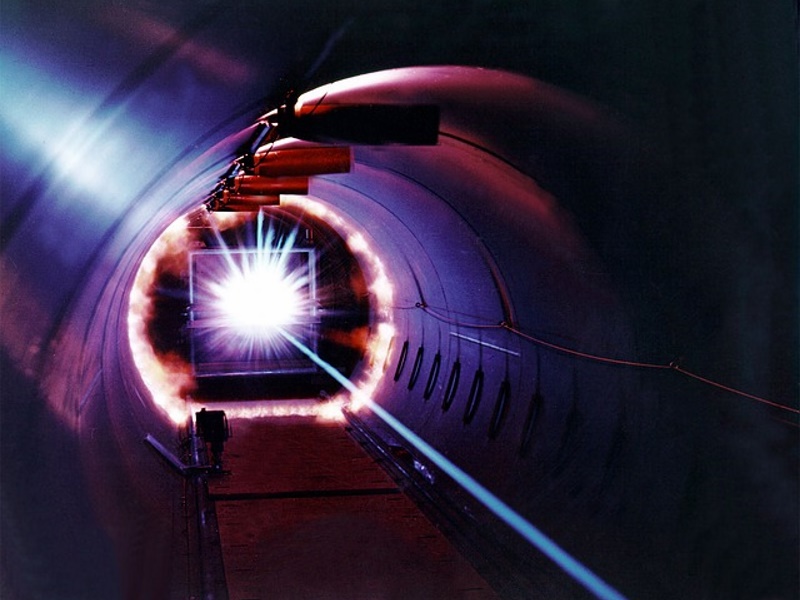- Home
- Internet
- Internet News
- Facebook Unveils Laser Powered Internet Connectivity Solution
Facebook Unveils Laser-Powered Internet Connectivity Solution

The new technology can pave the way for fast optical wireless networks capable of delivering Internet service to far-flung places.
"A large fraction of people don't connect to the Internet because the wireless communications infrastructure is not available where they live, mostly in very rural areas of the world," said Tobias Tiecke, who led the research team.
Light-based wireless communication, also called free-space optical communications, offers a promising way to bring the Internet to areas where optical fibres and cell towers can be challenging to deploy in a cost-effective way.
Using laser light to carry information across the atmosphere can potentially offer very high bandwidths and data capacity, but one of the primary challenges has been how to precisely point a very small laser beam carrying the data at a tiny light detector that is some distance away.
The Facebook researchers used fluorescent materials instead of traditional optics to collect light and concentrated it onto a small photodetector.
They combined this light collector, which featured 126 sq cm of surface that can collect light from any direction, with existing telecommunications technology to achieve data rates of more than 2 gigabits-per-second (Gbps).
"We demonstrated the use of fluorescent optical fibres that absorb one colour of light and emit another colour," Tiecke said.
"The optical fibres absorb light coming from any direction over a large area, and the emitted light travels inside the optical fibre, which funnels the light to a small, very fast photodetector," he added in a paper described in the journal Optica.
The new light collector uses plastic optical fibres containing organic dye molecules that absorb blue light and emit green light.
This setup replaces the classical optics and motion platform typically required to point the light to the collection area.
The fast speeds are possible because less than two nanoseconds lapse between the blue light absorption and the green light emission.
In addition, by incorporating a signal modulation method called orthogonal frequency division multiplexing, or OFDM, the researchers transmitted more than 2Gbps despite the system's bandwidth of 100MHz.
Get your daily dose of tech news, reviews, and insights, in under 80 characters on Gadgets 360 Turbo. Connect with fellow tech lovers on our Forum. Follow us on X, Facebook, WhatsApp, Threads and Google News for instant updates. Catch all the action on our YouTube channel.
Related Stories
- Samsung Galaxy Unpacked 2025
- ChatGPT
- Redmi Note 14 Pro+
- iPhone 16
- Apple Vision Pro
- Oneplus 12
- OnePlus Nord CE 3 Lite 5G
- iPhone 13
- Xiaomi 14 Pro
- Oppo Find N3
- Tecno Spark Go (2023)
- Realme V30
- Best Phones Under 25000
- Samsung Galaxy S24 Series
- Cryptocurrency
- iQoo 12
- Samsung Galaxy S24 Ultra
- Giottus
- Samsung Galaxy Z Flip 5
- Apple 'Scary Fast'
- Housefull 5
- GoPro Hero 12 Black Review
- Invincible Season 2
- JioGlass
- HD Ready TV
- Laptop Under 50000
- Smartwatch Under 10000
- Latest Mobile Phones
- Compare Phones
- Redmi Note 15 5G
- Redmi Note 15 Pro 5G
- Redmi Note 15 Pro+ 5G
- Lava Play Max
- Poco C85 5G
- Honor Magic 8 Lite
- Jolla Phone
- Realme P4x 5G
- Asus ProArt P16
- MacBook Pro 14-inch (M5, 2025)
- OnePlus Pad Go 2
- Poco Pad M1
- Just Corseca Skywatch Pro
- Honor Watch X5
- Acerpure Nitro Z Series 100-inch QLED TV
- Samsung 43 Inch LED Ultra HD (4K) Smart TV (UA43UE81AFULXL)
- Asus ROG Ally
- Nintendo Switch Lite
- Haier 1.6 Ton 5 Star Inverter Split AC (HSU19G-MZAID5BN-INV)
- Haier 1.6 Ton 5 Star Inverter Split AC (HSU19G-MZAIM5BN-INV)

















